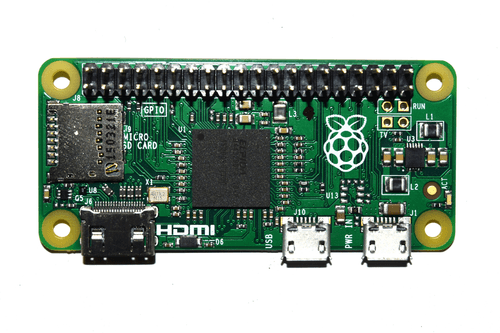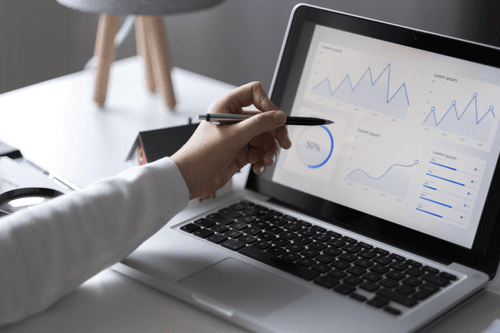Create an Intermittent Fan Controller With Python


From player stats on the jumbotron of a baseball game to the number of steps reflected on your Apple Watch, you’re interpreting, interacting, or examining data every day. The data we look at informs our everyday decisions on some level—whether that means taking an extra walk to meet your watch’s step goal or knowing when to grab a hot dog because the player at bat doesn’t have a likely chance of hitting a home run.
Data visualization refers to the way data is represented or displayed in a visual format. It often manifests as charts or graphs, and its purpose is to clearly and quickly communicate data points and the relationships between them.

2010 US Census population data. Source: https://datashader.org/
The human brain is able to process images very rapidly and accurately, much faster than it can process long columns of numbers, so visualizations are often the best way to convey a large amount of information in a short amount of time.
Data visualization is important because it allows us to discern trends and patterns easily. With just a glance, individuals should understand what the visual is explaining and, therefore, should be empowered to make informed decisions based on that data.
The benefits of data visualization include:
Error Identification: When data is laid out visually, it’s easy to spot obvious inconsistencies. This helps with efficient error recognition and correction.
Enhanced Storytelling and Comprehension: Data visualization facilitates pattern recognition by making relationships between data points obvious, e.g. to reveal business and industry trends.
Speed and Accuracy: Not only does data visualization aid in error identification and enhanced storytelling, but it enables these benefits to happen quickly. Combing through numerical data points is not only more time-consuming but also more error-prone.
In business, the benefits of data visualization facilitate:
Improved Decision-Making: When a team can efficiently identify and correct errors in their data, then make meaning and identify trends based on that data, that team is in a good position to make informed business decisions that are both evidence-based and future-oriented.
Strategy and Evaluation: Data visualization can be a powerful tool for monitoring how the above-referenced decision-making affects business performance and outcomes. Future plans can be adjusted in accordance with the data.
There are many good tools for data visualization, ranging from the built-in graphing of Microsoft Excel to the business-intelligence plotting and dashboarding tools like Tableau, Looker, and Microsoft’s Power BI. What about when you want to integrate plotting with your Python data analytics workflows? Luckily, there are many solid Python plotting options as well, all of which are listed and compared at pyviz.org. Matplotlib, Plotly, and Bokeh (along with tools built on top of them) are the most popular and are all solid choices. Any of these tools can help you make sure you draw the right conclusions at every step of your analysis and can help you build presentations driven directly from Python.
What if your data is large enough that the regular tools struggle to process or display it appropriately? In that case, check out Anaconda’s Datashader. Datashader easily handles billions of points on a laptop or even larger datasets with distributed cloud computing resources, and without any parameter tuning can help you see outliers *and* the overall distribution at the same time. Whatever tool you end up using to display your final results, doing a data dump with Datashader first can help make sure you aren’t being misled by your initial visualizations. Also check out the other Anaconda-supported OSS tools at HoloViz.org for making it easy to work with all your data interactively.
Remember that all data is biased, so even once the tools accurately reveal the data, acknowledge the limitations of the data itself whenever you present a visualization, and only share the results once you are confident in the story you are telling. After all, the whole point of a visualization is to help understanding and thus drive good decisions.
Talk to one of our experts to find solutions for your AI journey.